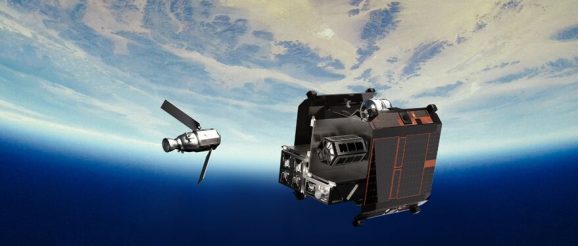AI spurs space sector innovation

MOUNTAIN VIEW, Calif. – The pace of innovation in the space sector is picking up thanks in part to artificial intelligence and machine learning. Amazon Web Services customers, for example, are designing spacecraft parts with generative AI. The parts are then 3D-printed and run through a battery of tests. The process leads to rapid iteration of designs that are “very intuitive and very innovative at the same time,” Alistair McLean, AWS Satellite Solutions principal architect, said Feb. 7 at the SmallSat Symposium here. Generative AI relies on deep-learning models to answer questions or create content based on patterns detected in enormous datasets. Much of the benefit for space companies comes from pairing generative AI with more traditional machine-learning algorithms and computer-vision models. “It’s a wonderful menagerie that seems to be a growing in terms of data and ways that customers are applying it,” McLean said. Cognitive Space, a startup specializing in automating satellite operations, uses Open AI’s ChatGPT and similar tools to search imagery archives and answer questions related to satellite tasking. In the past, someone looking for satellite imagery would have pulled up a map and drawn a box around the area they wanted to search. Now, a customer can find imagery by simply asking to see “synthetic aperture radar, hyperspectral and multispectral sensors over the city of Denver from the last two weeks,” said Hanna Steplewska, Cognitive Space president and chief operating officer. Geospatial analytics company HawkEye 360 also benefitting from AI in its work identifying radio frequency emitters around the world. The Herndon, Virginia-company known for geolocating emissions sources rapidly developed a new product that goes beyond labeling an emitter as an X-band radar. For instance, it can specify an emitter as “Kate’s X band radar,” said Kate Zimmerman, HawkEye 360 chief of data and analytics. “It’s been a real journey, taking this from a little R&D project running on somebody’s laptop to a full-blown production system in the span of about a year.” Cloud Computing All this progress would not be possible, the SmallSat panelists said, without cloud computing providers that give them access to extensive computing resources. While those resources remain on Earth, growing space activity has prompted companies to consider space-based clouds. The AWS Snowcone, an edge computer, traveled to the International Space Station on an Axiom Space flight in 2022. Since then, AWS has conducted a series of demonstrations with partners. In 2023, for example, SpiderOak demonstrated its OrbitSecure cybersecurity software by transmitting data between ground networks and low-Earth orbit. AWS is engaged in conversations about expanding space-based edge processing. “We want to listen to our customers first and foremost, meet them where they are and co-innovate together,” McLean said. McLean acknowledged size, weight and power limitations for on-orbit processing, but said “there’s a growing number of use cases that compute in space, storage in space, makes a lot of sense.” Startup LEOcloud is focused on providing space-based edge computing, including data centers in orbit. “The ability to run applications against data from many sources in space reduces the latency to actionable insight,” said Dennis Gatens, LEOcloud CEO and founder. “We have to move away from dragging all the data back to Earth for insight to address the needs of the customers.” Space-based edge processing will be particularly useful, Gatens said, for “medical emergencies in situations where you can’t come home, training, repair and diagnostics.”
